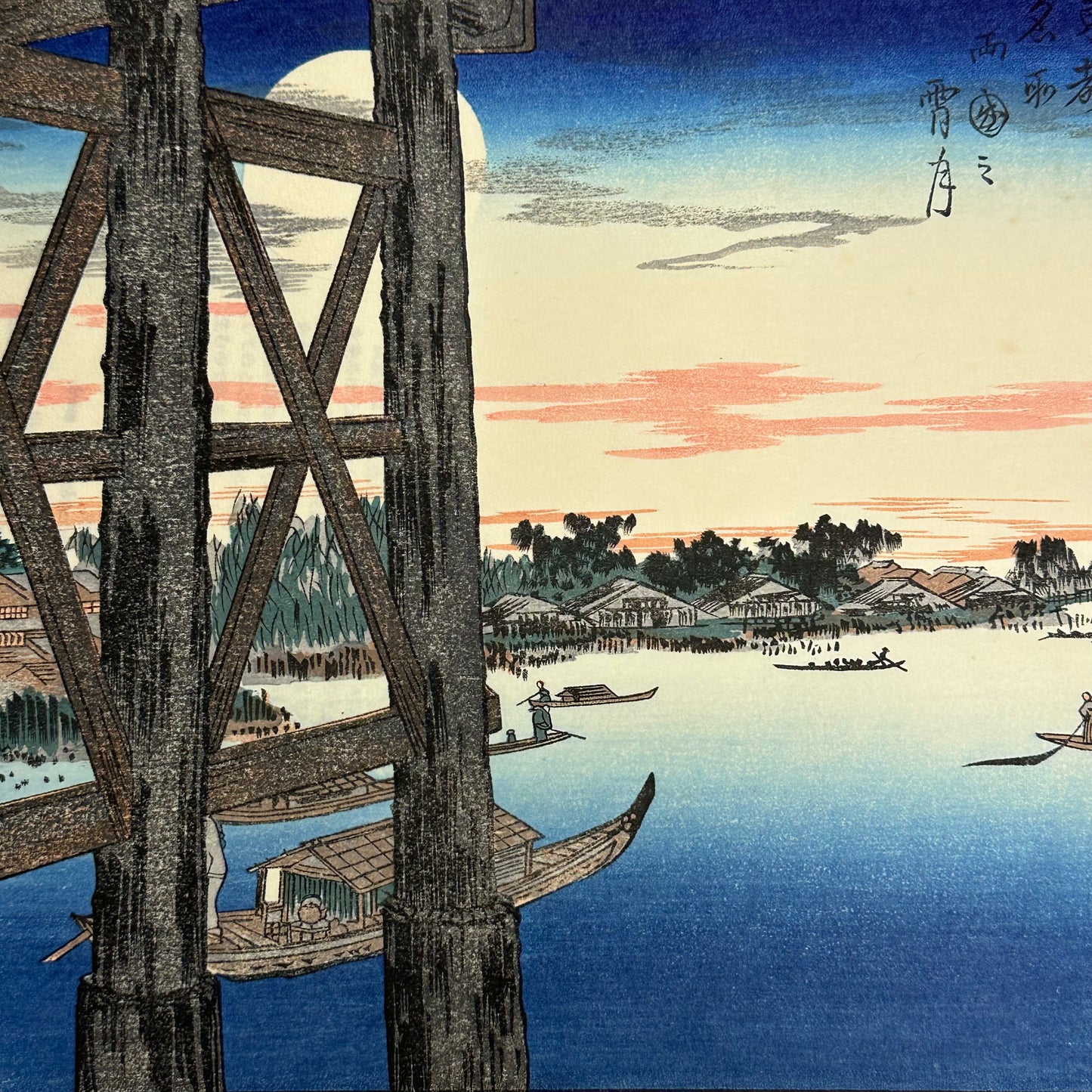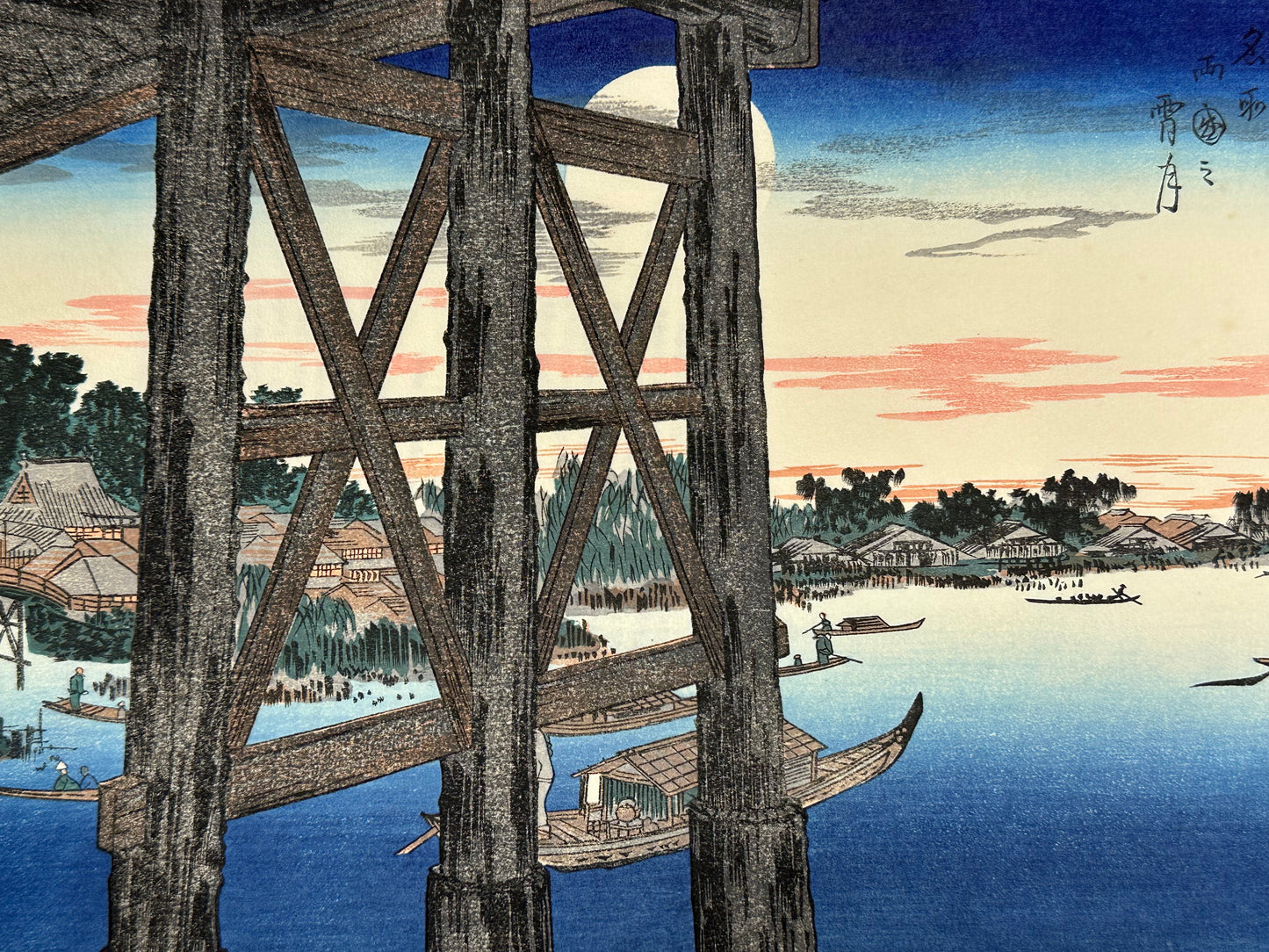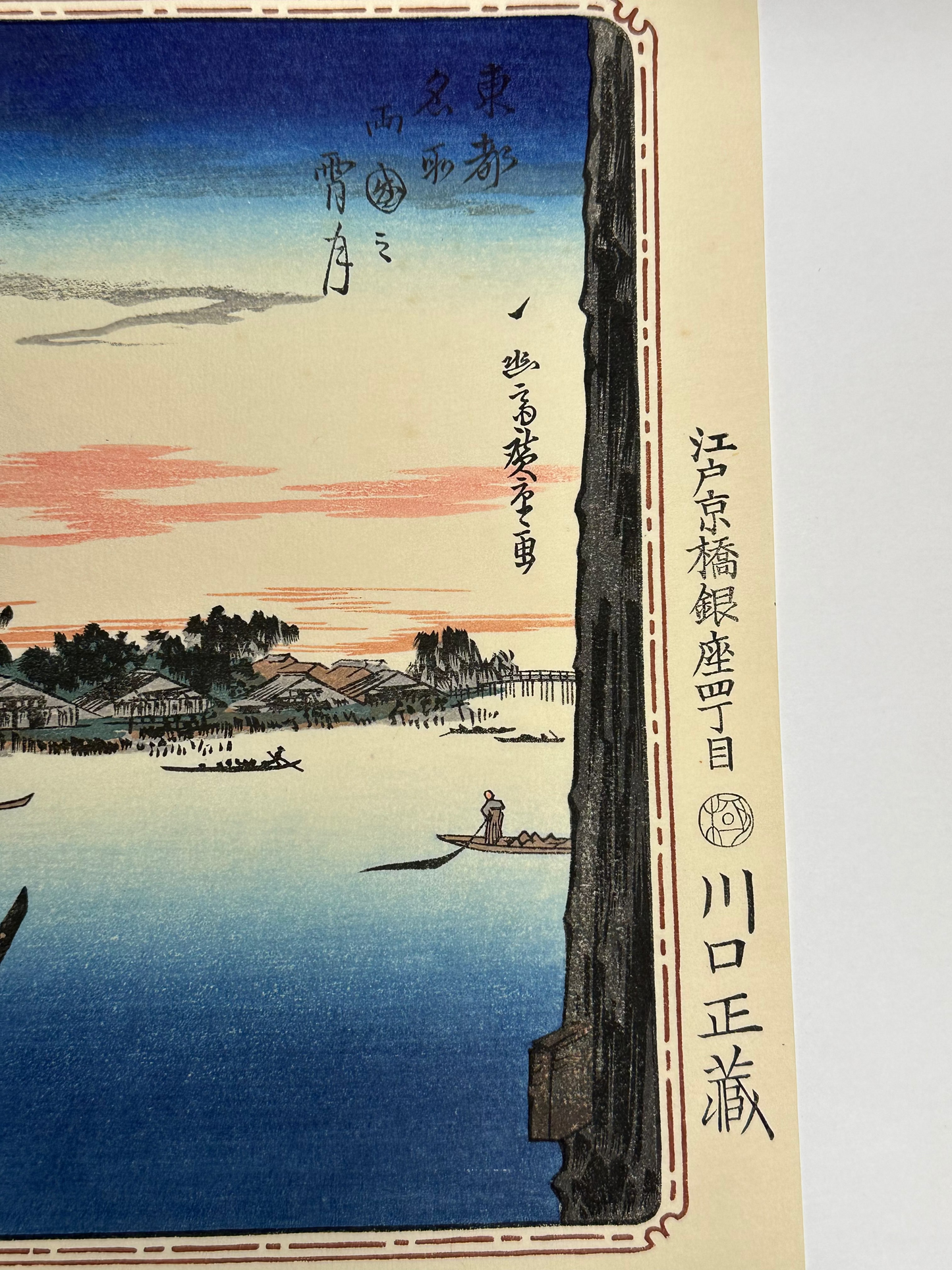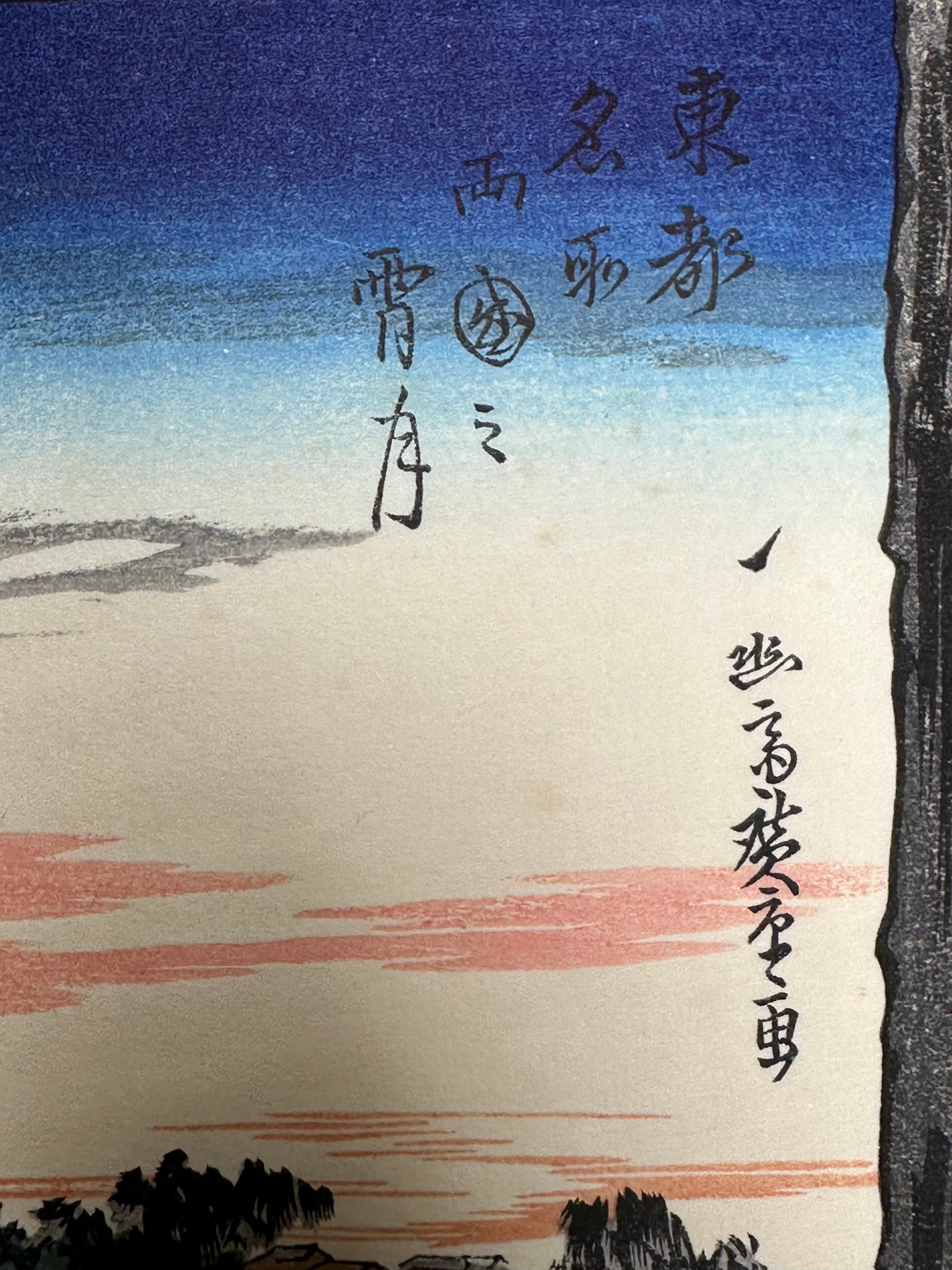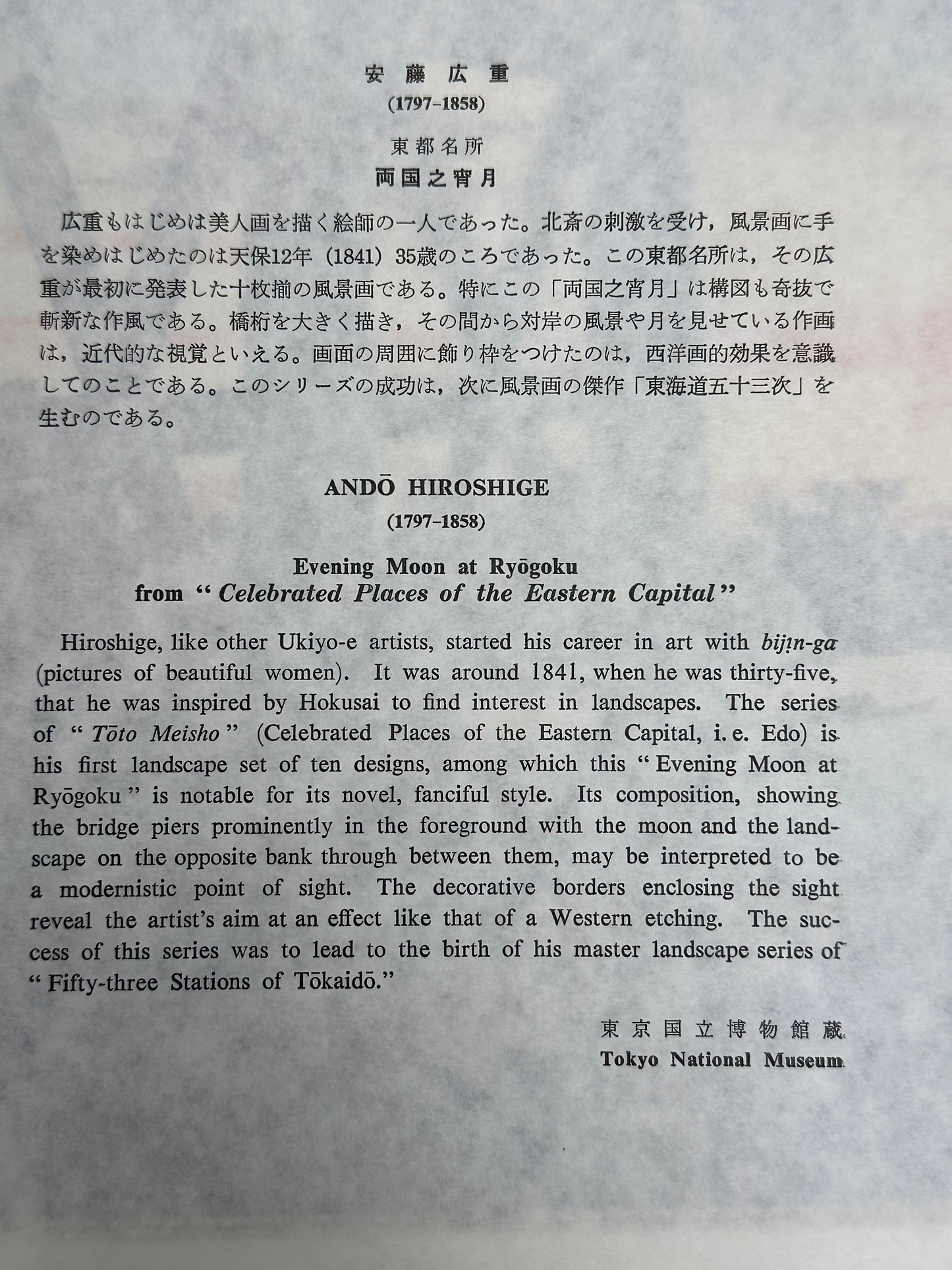Japanese Woodblock Print Reproduction of Hiroshige's 1831 "Ryogoku Bridge"
Japanese Woodblock Print Reproduction of Hiroshige's 1831 "Ryogoku Bridge"
Couldn't load pickup availability
Andō Hiroshige (1797–1858)
“Evening Moon at Ryōgoku Bridge”
From the series Tōto Meisho (“Celebrated Places of the Eastern Capital”)
Mid-Shōwa Period Reproduction (ca. 1960s) produced for the Tokyo National Museum.
A finely executed mid-Shōwa period color woodblock reproduction of one of Hiroshige’s most celebrated landscape designs, Ryōgoku no Yūzuki (“Evening Moon at Ryōgoku”). Originally published around 1831–32 as part of the early Edo-period series Tōto Meisho, this view captures the great wooden Ryōgoku Bridge spanning the Sumida River—one of Edo’s most lively pleasure districts. The monumental bridge supports in the foreground frame a tranquil riverscape where ferryboats and houseboats glide beneath the rising moon, while the far shore glows with the warm pastels of sunset.
This post-war reissue, printed on washi paper using authentic bokashi gradation techniques, beautifully preserves the delicate tonal range and atmospheric serenity of the original design. The cool, fading blues of evening sky merge seamlessly into the faint vermilion horizon—an effect that epitomizes Hiroshige’s mastery of mood, space, and fleeting natural light.
Artist: Andō Hiroshige (歌川広重)
Series: Tōto Meisho (“Famous Places of Edo”)
Title: Ryōgoku no Yūzuki (両国之宵月 “Evening Moon at Ryōgoku”)
Date of original design: circa 1831–32 (Edo period)
This impression: Mid-Shōwa period reproduction (ca. 1950s–60s)
Publisher: Unidentified post-war art publisher (likely export or museum edition)
Format: Ōban tate-e (大判竪絵)
Condition: Excellent color and impression.
Andō Hiroshige (安藤広重, also Utagawa Hiroshige 歌川広重) was one of Japan’s greatest ukiyo-e masters, renowned for his poetic landscapes and innovative compositions. Born in Edo (modern Tokyo), Hiroshige was originally trained as a fireman before joining the Utagawa school under Utagawa Toyohiro. His early works included actor portraits and bijin-ga (pictures of beautiful women), but he soon turned to landscape printmaking, revolutionizing the genre through his lyrical depiction of weather, atmosphere, and seasonal change.
